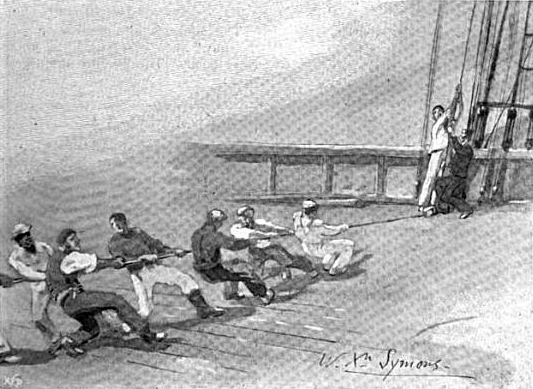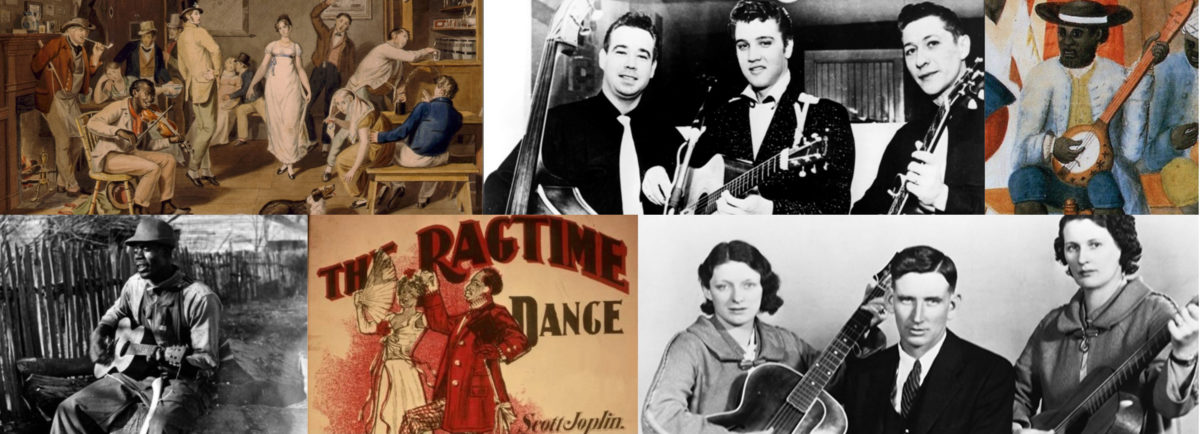
Sea shanties, or nautical shanties, are the work songs of sailors. Often sung in call and response fashion, shanties coordinate the actions of sailors in specific tasks. The singing of shanties evolved from more primitive chants and calls to coordinate work on board sailing vessels. They evolved with British and northern European sailors during the 16th century. Shanties sung by American sailors include older European and American songs, adaptations of these songs, and original creations. The 1820s through the 1860s were the peak years for American shantying. These were years that smaller packet ships carried passengers, goods, and mail on rivers and along the coasts of America. Fast transatlantic clipper ships brought immigrants and transferred goods both ways across the Atlantic Ocean.
Shanties are generally one of two types: hauling or heaving. Hauling songs coordinate intermittent actions, such as pulling on a halyard (rope) to hoist a topsail. Heaving songs accompany continuous actions, such as pushing the wooden bars of a capstan to raise the anchor of a ship. The anchor's rope winds around the capstan, which is a sort of giant winch. Rhythmic coordination of action is less important in heaving songs than in hauling songs.

